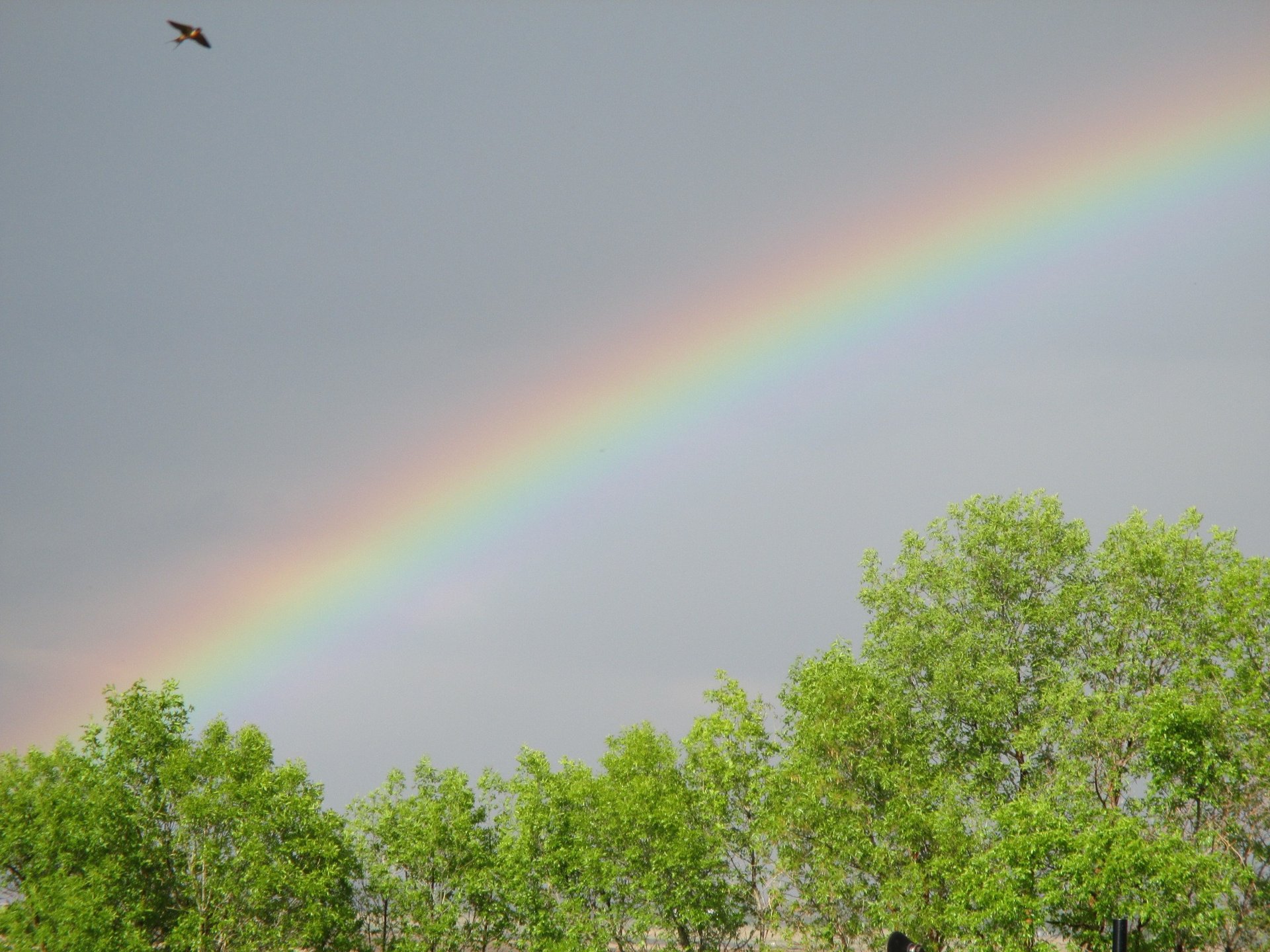
HOW DO I CARE FOR MY NEW PLANTS?
The answer can be very complex but you can easily keep most common plants alive and beautiful with a few basic tips.
HEALTHY PLANTS
Start with healthy plants and you have a much better chance of success. Many Garden centers now use growth inhibitors - and guess what?
They inhibit growth.
That means they look nice and tidy on the benches when you buy them but they often just don't perform as well once planted in your
garden or planter.
Moore's Greenhouse uses no growth inhibitors - we don't use harmful chemicals or pesticides - we grow as naturally as possible - and we choose to grow only the best and most hardy plants to help ensure your gardening victory.
We have carefully selected only those plants that have proven themselves worthy in our very limited gardening season here in Alberta.
LOCATION, LOCATION, LOCATION
Choose a suitable location for your plants. Is it wet? Dry? Too close to the house? Take note of where your plants will be - is it sunny? Shady? Windy? Does your garden face north? south? west or east? Some plants do best in full, hot sun and others thrive in shade.
Most plants are quite comfortable in the middle and are often tolerant of variables. Some plants will not be content if not placed in the 'right spot'. Marigolds and Portulaca love sunshine but your non-stop Begonias and Fuchsias will prefer shade.
If you're unsure please ask before you buy - and look at the tags that come with most plants - they often tell you a great deal about the plants' individual needs.
SOIL
What will your plant be living in? Whether it is the garden, a ceramic container, or an old wagon, you need to consider the importance of its environment. This is critical to your gardening success. If you've ever taken soil from the ground and put it into a container to try and grow plants, you know how quickly it turns hard -
like concrete... it's too heavy...too hard and your plants roots cannot grow - they cannot breathe.
It's well worth your efforts, time, and money to make sure you offer the best soil possible. There are many ways to improve your soil but you need to evaluate your starting mix. A quality soil mix from the garden center is best in most containers and you can add a variety of amendments to your garden soil to improve its quality as well. You may have clay-soil or sandy-soil but whatever you begin with, you ultimately want a light and airy, loam mix that holds moisture and drains well.
Other factors might include the pH of the soil, sodium levels, nutrients, microbes, as well as type and location. Do some investigative work and take samples to the experts if needed.
MULCH IT!
When should you plant? Please don't take your new baby plants home from the garden center and plant during the midday sun on the hottest day of the year or during a rainstorm in the mud. While most people won't plant in the muddy rain, many will plant in the hot sun and not realize how stressful this may be on the plants. Plant on an overcast day if possible - and a calm day is best to allow your plants to recover from the shock of transplanting. (or cover from hot sun.)
Be sure all danger of frost is past and/or be prepared to cover with sheets if necessary at night to protect from frost. A cold frame can help extend our short season.
Some plants can be planted deeper and cover the stem - such as, tomatoes... plant them deeper and they will develop new roots along the stalk and give you a stronger plant. Peonies and Roses however should never be planted deeper as this would mean a certain death. When uncertain, plant at the same level as it was originally growing.
WATER WATER WATER
How often should I water it? It is a question we hear often in the greenhouse. I wish there were an easy answer. I would love to tell my customers to water every Tuesday and everything would be great. Unfortunately this isn't the case. Watering is an art that must be mastered.
Each species is different but most common plants prefer to be perfectly moist (not too wet) ....then dry slightly - (not too dry!) and be perfectly watered again before they wilt. Sounds easy but when you consider the sun and wind... cloudy days and rainy days ..... hot or cold ..... a new plant in big pot or a root-bound plant in a little pot..... it soon becomes a challenge for most gardeners.
Fear not! You will soon get the hang of it!!
Good basic soil will resemble
'Moist Cake'
it is best to water in the morning ... check the soil with your finger - stick it deep into the soil...see if it's wet... water if it needs it but remember that many plants are killed by over watering.
Those roots need to breathe and they can drown if over watered. The type of water matters too - (my plants like rain-water!) It helps to know the pH of your water -the sodium & iron content, and many other water-related factors may affect the health of your plants.
FEED ME!!
Should you fertilize your plants? Most likely the answer is, "Yes." ... but again, each plant is different. Most will do fine on a quality balanced organic product but take a look at the labels - they have special fertilizers for different types of plants.... Tomato fertilizer, Rose fertilizer etc..... they have been tried and tested.... read the directions carefully ... have your soil tested before adding any amendments ... and don't overdo a good thing.
What do those numbers mean??
Maybe you've seen them on a Fertilizer package and already know what they mean or maybe you haven't yet noticed? Fertilizer has 3 numbers written like this - 10 - 10 - 10 ...but what do they mean?
nitrogen-phosphorus-potassium
(N-P-K)
A fertilizer with a high first number contains higher levels of nitrogen (N). 'Green' ... nitrogen is growth related - for green growth such as growing plants, grass etc.
A fertilizer with a high second number contains higher levels of phosphorus (P). 'Roots and Blooms' Great for new plants needing root boosting or flowering plants for bigger, better blooms/fruits.
A fertilizer with a high third number contains higher levels of Potassium (K). 'Health' For general health and disease resistance. (also called Potash)
You'll want to avoid high nitrogen-rich fertilizers after the summer solstice in June (in the Northern hemisphere.) as plant growth is slowed/stopped and they are producing blooms and fruits. Choose your fertilizer carefully and remember to always be careful how much you apply. Too much can be harmful - better to have a little less, than too much.
Sustainable methods are preferred and include pure, organic sources and a complete movement away from chemicals, including common fertilizers.
HELP! The pollinators!
. Plant Bee-friendly varieties such as sunflowers, bachelor's buttons, calendula, bee balm, and many more.
There is a vast amount of information waiting out there for you - but hopefully these few basics will help you achieve great success -
We hope you enjoy beautiful blooms and tasty tomatoes!
Happy Gardening!!


